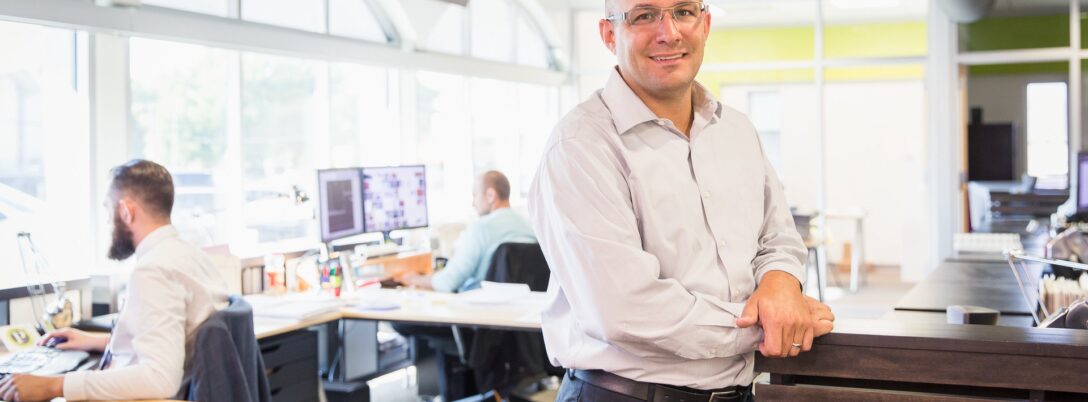Giving by Design |
Brad Erwin and Paragon Architecture look to further the missions of the clients that have fueled the firm’s growth. |
Written By: Aaron J. Scott |
When Brad Erwin established Paragon Architecture in 2010, he made charitable giving a priority. “I’m a firm believer that Paragon is here to make a positive impact — to make an impact on our team and, through that, our community.” But until creating a donor-advised fund in August 2016, the company’s giving was less than intentional. While he has a few favorite charities — Convoy of Hope, Care to Learn, Community Partnership of the Ozarks — and the company participates in United Way of the Ozark’s Day of Caring, he admits their efforts lacked focus. “We were reacting to the one-off opportunities to sponsor, give or participate that popped up throughout the year.”
Now, he says, with the new fund, “we’re thinking proactively to put those opportunities together while still responding to others that arise. Some of those are recurring and we can now plan ahead for them.” Moreover, he wants to do more to help give back to the communities where Paragon has worked. Much of Paragon’s success is the result of working primarily with school districts, municipalities and other civic institutions across the Ozarks. “Because a lot of our clients are in the public realm, if we have the opportunity to help further their mission, that’s part of the partnership we develop with them. That’s really important to us.”
“I’m a firm believer that Paragon is here to make a positive impact — to make an impact on our team and, through that, our community.” — Brad Erwin
He also sees the potential to connect his clients for mutual benefit. “We want to explore how we can use this fund to connect our education partners, like Willard Public Schools and Ozarks Technical Community College,” he says. “We’re considering an endowment to provide scholarships for students that want to go into the drafting field. That aligns really well with us from a business perspective, but also helps fulfill the needs we see for STEM education in our community.”
For Erwin, it all goes back to architecture’s role in community improvement. “When working with school districts, we try to bridge a gap between the needs of the district and the needs of that community. In the rural school districts, the school is the heart of the community, and it rides the tide with the school district,” he says. “When we’re designing a new gymnasium, we see more than a physical education space. It now creates a location for youth teams to play and practice. Or that second gymnasium now allows those kids to go home at 6 p.m. instead of 8:30 because they’re not fighting over a single practice space. That in turn improves the quality of their family life and the opportunities for education. So that one little drawing we put together creates so many more opportunities.”



